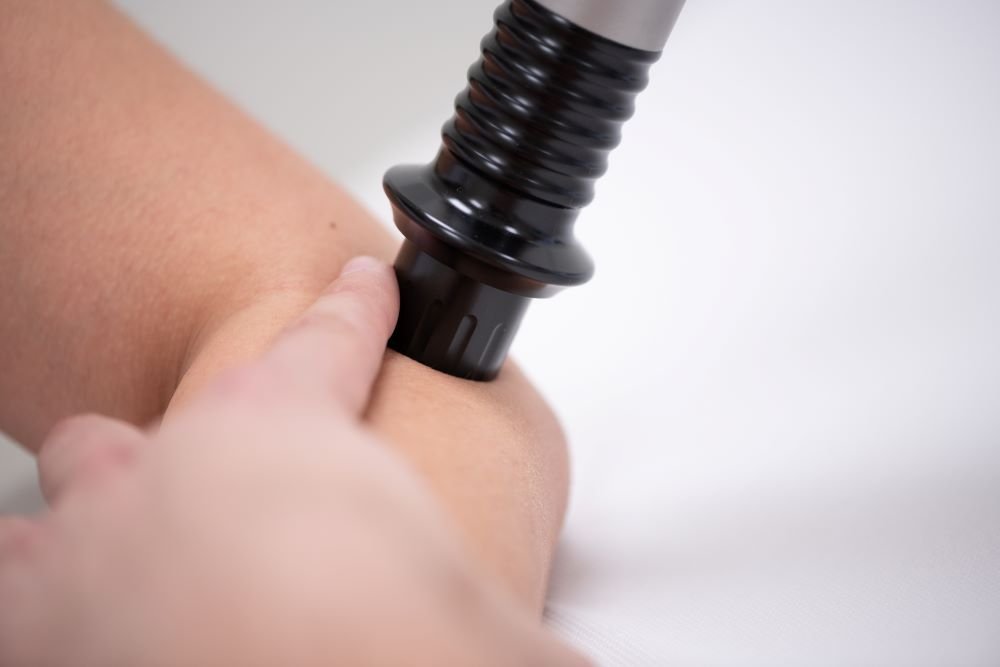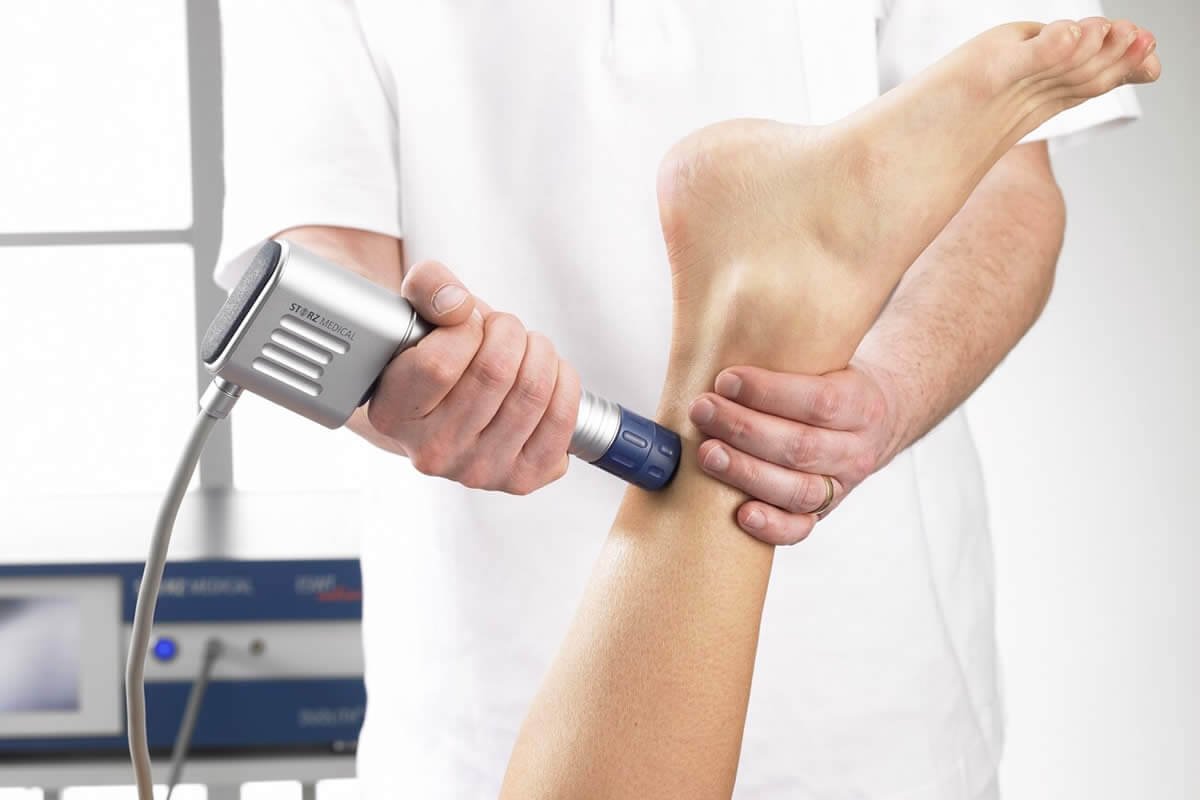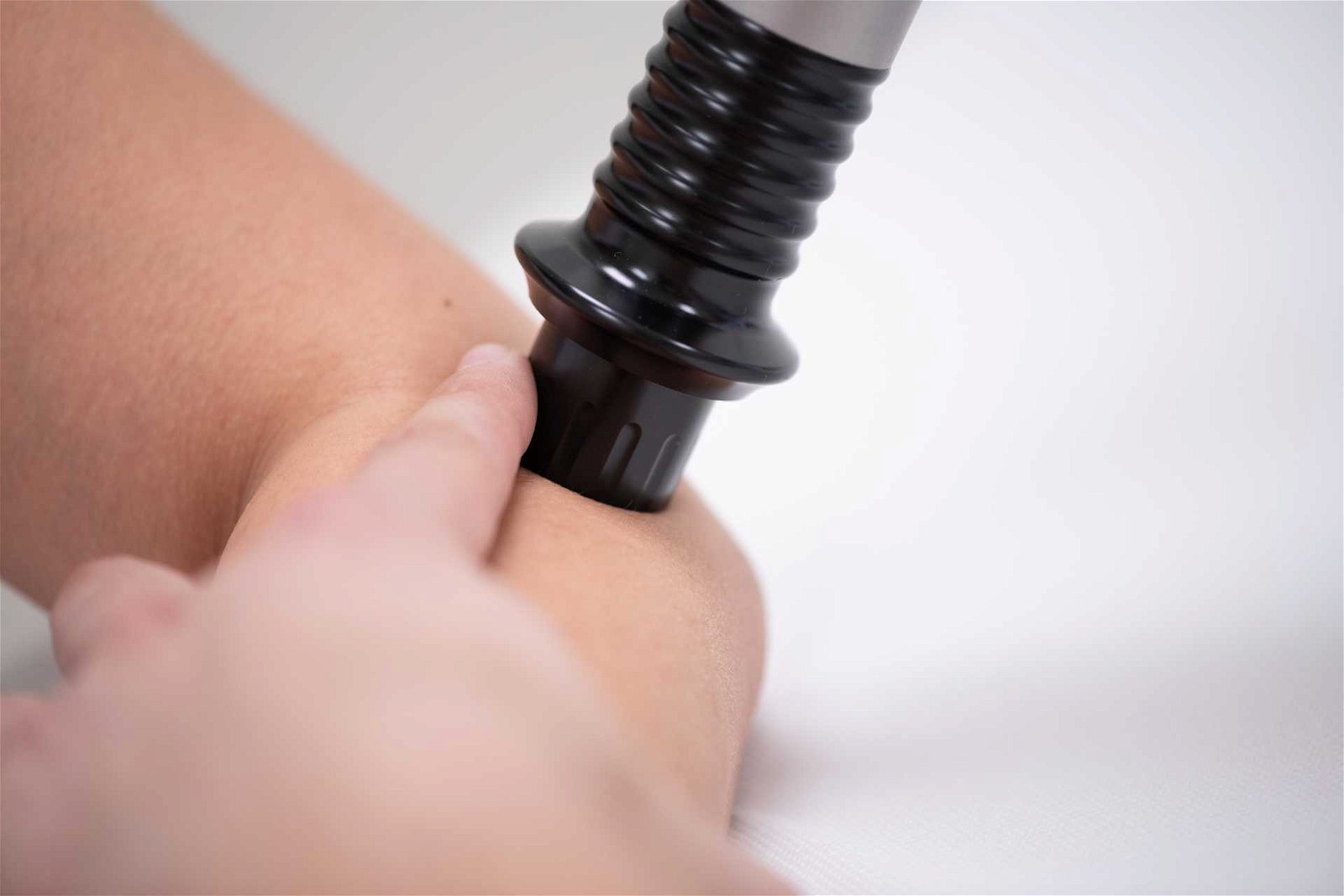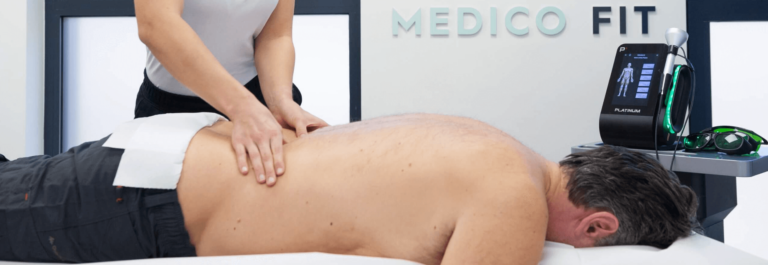Extracorporeal shockwaves
Extracorporeal shockwave therapy (ESWT) is still a relatively new therapeutic method in physiotherapy, orthopaedics and traumatology. In recent years, the development of shockwave therapy has been very rapid and extremely successful.
Treatment with extracorporeal shockwaves is a highly successful instrumental technique of physiotherapy for the treatment of specific pathologies of the musculoskeletal system.
At MEDICOFIT clinic, we successfully treat many joint and ligament problems with extracorporeal shockwaves, such as heel spurs, shoulder calcifications, tennis elbow and golfer’s elbow, tendinopathies, and many other musculoskeletal pathologies.
Did you know that compared to surgical procedures, the cost of ESWT is significantly lower, while the therapy is also non-invasive? The development of modern orthopaedics and physiotherapy is steadily moving towards non-surgical treatment with technology to accelerate healing of tissues.
How do extracorporeal shockwaves work?
Extracorporeal shockwaves (ESWT) occur with large ranges of pressure changes, resulting in waves of compression and tension forces.
ESWT is considered an effective, safe, and non-invasive instrumental therapy. The exact mechanism of action of extracorporeal shockwaves has not been fully explained to date, but due to the high clinical effectiveness of the treatment, there is growing patient demand for pain treatment with ESWT.
Extracorporeal shockwave therapy consequently has a strong analgesic and anti-inflammatory effect on soft tissues, and it also accelerates the self-healing processes of cells.
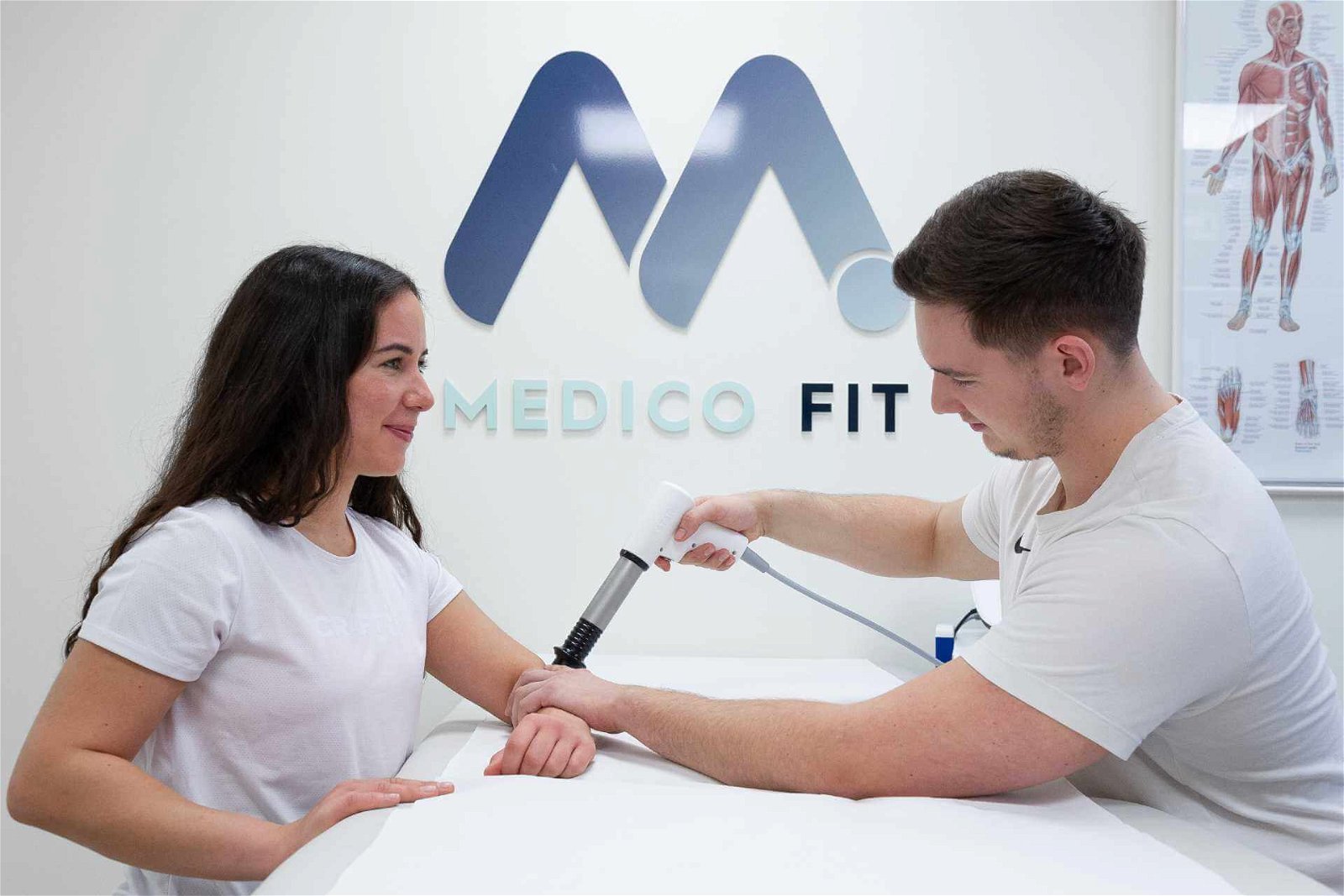
The technology used at MEDICOFIT clinic allows us to direct the extracorporeal shockwaves directly through the affected tissue, which has several effects:
The mechanical pressure on tissue caused by a extracorporeal shockwave has been shown to increase the permeability of the membrane surrounding each cell. This increases microscopic circulation, new small vessels are formed – thereby increasing the healing ability of the treated area.
Did you know that it is the formation of new blood vessels that is responsible for removing calcium deposits? With the formation of new blood vessels, calcium resorption in the affected area increases, allowing the calcification to be removed.
Shockwaves also have a biological effect on cell function, influencing many cellular genes and enzymes. We successfully use this when healing injuries, because:
- Shockwaves stimulate cells called osteoblasts – these are cells that are responsible for healing and forming new bone and are crucial for successful healing of fractures.
- Shockwaves also stimulate cells called fibroblasts – these cells are responsible for healing connective tissue such as tendons and ligaments.
Extracorporeal shockwaves also have an analgesic effect, specifically through two mechanisms:
- Hyperstimulation analgesia – Local nerve endings are flooded with so much stimulus that their activity decreases, resulting in a short-term reduction in pain.
- Gate control mechanism – By stimulating local nerves, your perception of pain is rebalanced – controlling the travel of pain stimuli, which significantly contributes to long-term pain reduction.
Different generators produce different forms and intensities of shockwaves. There are different mechanisms of generation, provided by different types of devices:
- Electromagnetic shockwaves – through a coil and electric current
- Piezoelectric shockwaves – through piezoelectric crystals
- Electrohydraulic shockwaves – through a liquid medium (the oldest method)
- Low-energy shockwaves – created by a radial pressure wave
When do we use extracorporeal shockwaves?
Because of the wide spectrum of effects of shockwave therapy, there is a wide range of medical conditions for which ESWT is recommended.
Shockwave therapy can be used alone, but for best results, we use it at MEDICOFIT clinic in combination with special therapeutic training and instrumental therapy.
Treatment also includes WINTECARE TECAR therapy, SUMMUS high-energy laser, diamagnetic therapy, 6D action, and HiToP high-tone electrostimulation.
The indications for which we use EWST at MEDICOFIT clinic are the following:
- Chronic tendinopathies
- Rotator cuff tendinopathy (including calcification)
- Lateral and medial epicondylopathy
- Adductor musculature tendinopathy
- Pes anserinus tendinopathy
- Peroneal tendinopathy
- Tendinopathies of the ankle and foot
- Greater trochanteric pain syndrome
- Patellar tendinopathy
- Achilles tendinopathy
- Plantar fasciopathy
- Delayed healing of bone fractures
- Pseudoarthrosis
- Stress fractures
- Avascular necrosis of the bone
- Trigger finger
- Bone marrow oedema
- Osgood-Schlatter disease
- Medial tibial stress syndrome
- Osteoarthritis
- Myofascial pain syndrome
- Muscle injuries without muscle fibre disruption
- Spasticity
- Carpal tunnel syndrome
Every year, the list of potential indications for the use of ESWT is expanding and being supplemented. ESWT represents the future not only of orthopaedics and physiotherapy, but of regenerative medicine in general. That is why we devote a lot of time to additional employee training at MEDICOFIT clinic.

What are the benefits of extracorporeal shockwave therapy (ESWT)?
ESWT has significantly changed the treatment of many pathologies in modern physiotherapy and redefined the clinical practice guidelines for non-operative treatment of injuries.
The main advantages of ESWT include reducing the need for surgeries, which were necessary in the past, and the therapy ensures high safety of treatment and is at the same time extremely effective.
Did you know that compared to surgical procedures, the cost of ESWT is significantly lower, while the therapy is also non-invasive? The development of modern orthopaedics and physiotherapy is steadily moving towards non-surgical treatment with technology to accelerate healing of tissues.
It may surprise you, but we often encounter shockwaves without realising it or noticing them – the sound of thunder, the booms of explosions, or the noise of excited crowds are typical examples of shockwaves that we can encounter in everyday life.
Is shockwave therapy ever not recommended?
Extracorporeal shockwave therapy is an extremely safe method of treatment for many conditions. However, in a few rare cases, we need to pay more attention to the choice of therapy. Therapy is not recommended in the following circumstances:
- pregnancy,
- blood clotting disorders,
- with an implanted pacemaker,
- there is an open wound or active skin infection at the treatment site.
In these cases, it is best to consult with a doctor and perhaps delay the treatment. MEDICOFIT clinic physiotherapists are well aware of these conditions and will warn you about them during treatment.
